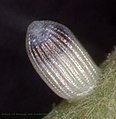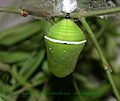| Dark blue tiger | |
|---|---|
 | |
 | |
| Male underside both T. s. dravidarum Kerala, India | |
| Scientific classification | |
| Domain: | Eukaryota |
| Kingdom: | Animalia |
| Phylum: | Arthropoda |
| Class: | Insecta |
| Order: | Lepidoptera |
| Family: | Nymphalidae |
| Genus: | Tirumala |
| Species: | T. septentrionis |
| Binomial name | |
| Tirumala septentrionis (Butler, 1874) | |
Tirumala septentrionis, the dark blue tiger, [1] [2] is a danaid butterfly found in the Indian subcontinent and Southeast Asia. [1] [2]


